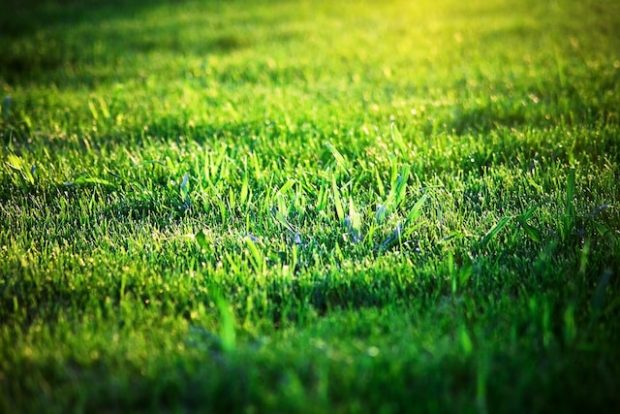A lush, vibrant lawn enhances the beauty of any property. However, the traditional methods of lawn maintenance often involve practices that are harmful to the environment.
From excessive water usage to chemical-laden fertilizers, maintaining a green lawn can have a significant ecological impact. Fortunately, there’s a shift towards eco-friendly practices in landscaping.
Implementing sustainable techniques not only helps create a greener lawn but also contributes positively to the environment. In this article, we’ll explore various eco-friendly approaches and solutions for maintaining a beautiful lawn while minimizing environmental impact.
Sustainable Landscape through Environmentally Conscious Methods
Water Conservation
One of the primary concerns in maintaining a green lawn is excessive water usage. Adopting water-efficient practices can significantly reduce this impact. Consider installing a rain barrel or a smart irrigation system that adjusts water usage based on weather conditions.
Additionally, watering deeply but infrequently can encourage deeper root growth, making the lawn more resilient during dry periods.
Native and Drought-Resistant Plants
Opt for native plant species and drought-resistant grass varieties when landscaping. These plants are naturally adapted to the local environment, requiring less water, fertilizer, and maintenance. Native plants also support local biodiversity by providing habitats for pollinators and wildlife.
Natural Fertilization and Soil Health
Chemical fertilizers can leach into waterways, causing harm to aquatic life and disrupting ecosystems. Instead, opt for organic and natural fertilizers such as compost, mulch, or organic soil conditioners. These options improve soil health, enhance microbial activity, and promote better nutrient absorption by plants.
Integrated Pest Management (IPM)
Pesticides not only harm unwanted pests but also beneficial insects, birds, and other wildlife. Embrace Integrated Pest Management strategies that prioritize natural pest control methods. This includes using beneficial insects, such as ladybugs, to control harmful pests and practicing proper lawn maintenance to prevent pest infestations.
Grasscycling and Sustainable Lawn Care
Grasscycling involves leaving grass clippings on the lawn after mowing, allowing them to decompose and return nutrients to the soil. This practice reduces the need for artificial fertilizers while promoting healthy soil.
Additionally, opt for manual or electric lawn equipment to reduce air and noise pollution compared to gas-powered tools.
Mindful Landscaping Practices
Design your landscape to minimize environmental impact. Consider incorporating permeable paving materials that allow rainwater to infiltrate the soil rather than running off into storm drains. Plant trees strategically to provide shade, reduce the need for cooling, and sequester carbon dioxide from the atmosphere.
Eco-Friendly Lawn Renovation
When renovating your lawn, consider using environmentally friendly materials. For instance, use recycled materials for hardscaping projects like pathways or retaining walls. Choose sustainable landscaping materials, such as reclaimed wood or recycled plastic, for edging or garden borders.
Reduce Lawn Size
Consider reducing the overall size of your lawn by creating more functional outdoor spaces like vegetable gardens, native plant beds, or hardscaped areas. Smaller lawns require less maintenance, water, and resources while still providing greenery and beauty.
Eco-Conscious Lawn Care Services
When outsourcing lawn care to professionals, seek out companies that prioritize eco-conscious practices. Choose services that utilize environmentally friendly techniques, such as organic lawn treatments and natural pest control methods. Inquire about their approach to fertilization, weed control, and pest management, ensuring they use eco-friendly products and methods approved by environmental agencies.
Certifications and affiliations with environmental organizations can indicate a commitment to sustainable practices. Look for certifications like the National Association of Landscape Professionals’ Sustainable Landscape Management (SLM) certification or affiliations with environmentally conscious groups like the Environmental Protection Agency’s WaterSense program.
Additionally, consider companies that emphasize proper lawn maintenance practices, such as mulching mowers, which recycle grass clippings back into the lawn, reducing waste and enhancing soil health. Ensure they are equipped with energy-efficient tools and equipment that minimize environmental impact.
Communication is key when hiring lawn care services. Clearly communicate your preference for eco-friendly practices and inquire about the specific techniques and products they use. A reputable and environmentally conscious lawn care service provider will be transparent about their methods and be willing to accommodate your preferences for sustainable lawn care.
Conclusion
Creating and maintaining a green lawn doesn’t have to come at the cost of environmental degradation. By embracing eco-friendly practices, homeowners can cultivate a beautiful and sustainable landscape.
From water conservation to natural fertilization and mindful landscaping, there are numerous strategies available to minimize the ecological footprint of lawn maintenance. Implementing these sustainable techniques not only contributes to a healthier environment but also fosters a more resilient and vibrant ecosystem in our own backyard.
Let’s strive to create greener spaces that benefit both our homes and the planet.
Read More:


